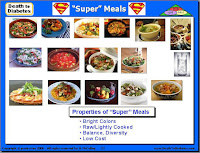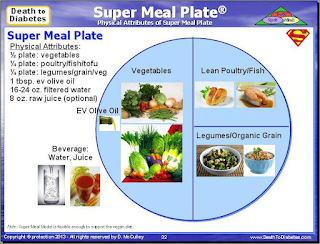If the colon is backed up (e.g. constipation) when the liver empties its toxins into the colon for removal, the liver deposits the toxins into fat cells, and the toxins are retained in the body. Consequently, colon cleansing/detoxification can provide relief from the buildup of these toxins and illnesses such as colds, flu, constipation, diarrhea, breath and body odors, fatigue, headaches, sinusitis, allergies, hemorrhoids, weight problems, digestive difficulties, back and muscle aches, knee pain, poor eyesight, poor memory, stress, etc.
Benefits from colon cleansing include a dramatic relief of aches and pains in the back, chest and joints; a dramatic increase of energy and mental awareness; overwhelming joy, incredible insight, and even better sex. Proper colon cleansing/detoxification can promote improved assimilation of food and nutrients leading to improved health.
Key nutrients that help to cleanse, detoxify and nourish the colon include:Benefits from colon cleansing include a dramatic relief of aches and pains in the back, chest and joints; a dramatic increase of energy and mental awareness; overwhelming joy, incredible insight, and even better sex. Proper colon cleansing/detoxification can promote improved assimilation of food and nutrients leading to improved health.
- Bentonite clay, charcoal, apple pectin, psyllium husk: provide needed bulk fiber for removal of compacted fecal matter, mucosal plaque, intestinal parasites and toxins.
- Chlorella: is a blue-green algae superfood that contains high levels of chlorophyll, which is one of the greatest nutrients for cleansing the bowel and other elimination systems, such as the liver and the blood. Chlorella contains amino acids, enzymes (including pepsin for digestion), vitamins, minerals, carbohydrates; and, RNA and DNA, the building blocks of life. Chlorella is comprised of a fibrous, indigestible outer shell that has been proven to actually bind with pesticides like PCBs and heavy metals like mercury. Chlorella helps to remove metabolic wastes in tissues and provides support to the liver.
- Flaxseed, psyllium seed, slippery elm bark, marshmallow root: reduce inflammation and irritation of intestinal walls to facilitate healing. Ground flaxseeds absorb water and expand in the colon, allowing toxins and mucus to be removed. In addition, flaxseed has been found to help lower cholesterol and blood pressure levels.
- Garlic (raw/aged): provides microflora balance to the gastrointestinal tract and strengthens the immune system.
- Herbs effective in killing parasites: include garlic, black walnut hulls, clove stems, cranberry extract, grape seed extract, fennel, goldenseal, pumpkin seeds, sage, thyme, and wormwood.
- Oxygen-based colon cleanser: uses specialized ozonated magnesium oxides to reduce the solid toxic mass into a liquid or gas form. The best way to melt away compacted matter is through an oxidation reduction reaction. Oxygen therapy removes old, impacted fecal matter as it detoxifies and cleans the entire colon. By thoroughly cleansing the intestinal tract, it allows room for a normal bowel process.
- Peppermint leaf: helps to reduce and move gas that is created during a deep intestinal/bowel cleanse. It also reduces spasms.
- Probiotics: help to replenish the population of friendly bacteria in the colon after cleansing.
- Senna, ginger: help to strengthen the colon muscle and increase peristalsis.
- Spirulina: is a blue-green algae superfood, similar to chlorella, but contains a higher level of GLA and potassium.
- Colonic hydrotherapy: also strengthens the colon as it helps to remove the accumulated fecal waste and other debris, but it should only be performed by a licensed and experienced healthcare professional.
- Whole foods: include green, leafy vegetables, dark-colored fruits, and organic whole grains that contain fiber to help eliminate toxins and other waste products.
Liver cleansing/detoxification can provide relief from ailments such as high cholesterol, high blood pressure, blood clots, thick sticky blood, constipation, diarrhea, fatigue, allergies, weight problems, digestive difficulties, stress, and low sex drive. Liver cleansing/detoxification helps to purge old fats, old cholesterol deposits, gallstones, poisons, drug residues, and toxic waste from the liver while regenerating and healing liver cells.
The following is a list of key nutrients that help to cleanse, detoxify and nourish the liver.
- Alpha lipoic acid (ALA): protects the liver from potentially harmful cell changes and assists it in flushing toxins from the body. ALA is effective in minimizing liver toxicity following exposure to poisons such as heavy metals (including lead) and toxic industrial chemicals such as carbon tetrachloride. Food sources: spinach, broccoli, Brewer's yeast, Brussel sprouts, rice bran, and organ meats.
- Aloe vera: contains polysaccharides, enzymes, glycoproteins, amino acids, vitamins and minerals that help to support the immune system and detoxify the digestive system.
- Apple juice (organic): contains mallic acid, which weakens adhesions between solid globules and softens/dissolves gallstones.
- Artichoke: contains potent polyphenols (bioflavonoids, caffeoyl-quinic acids) that work to cleanse the liver and provide antioxidant protection while it releases accumulated toxins. Artichoke increases the production of bile in the liver to aid in the digestion of fats, which can relieve bloating, gas and other uncomfortable symptoms of indigestion. Artichoke is an excellent source of fiber, and contains magnesium, folate and Vitamin C.
- Barley/wheat grass, dandelion root, wormwood: contain nutrients that increase bile and help to clean the liver and bile ducts to allow excess cholesterol to leave the body. They help to flush fat deposits from the liver and prevent the formation of gallstones.
- Cilantro: is known as Chinese parsley, and refers to the leaves of the coriander plant. It is a cooling herb and puts out excess flames in the stomach and generally enhances digestion. In recent years, modern science has discovered that cilantro is a natural chelation agent that is very helpful in removing heavy metals such as lead, mercury and aluminum from the body.
- Dandelion root: is one of the two major herbal liver tonics (with milk thistle) that helps to increase both the production and the flow of bile. It also prevents liver congestion by helping to flush out fat deposits.
- Epsom salt: contains magnesium sulfate, which serves to relax and dilate the bile duct so that larger stones can pass through during a liver flush. The Epsom salt also serves to evacuate the small and large intestines of feces.
- Extra virgin olive oil, barberry: stimulate the liver, the gallbladder and the production of bile. Extra virgin olive oil specifically stimulates the gallbladder and bile duct to contract and expel its contents.
- Garlic: kills bacteria, fungi, and other harmful pathogens, and helps to increase intestinal microflora. Also, binds with cadmium, mercury, and lead and removes these metals from the body to prevent cancer. Aged garlic has shown to provide even better health benefits.
- Milk thistle: is the other major liver tonic (with dandelion root). It contains silymarin, a bioflavonoid antioxidant that provides protection and healing of the liver by strengthening the structure of the liver membrane to prevent the penetration of toxins; and, increasing protein synthesis to stimulate the regeneration of damaged liver cells and the generation of new healthy liver cells. Milk thistle supports the production of the liver’s own powerful antioxidant enzymes, such as glutathione.
- Turmeric: contains essential oils and the active ingredient curcumin, which is a strong anti-inflammatory and antioxidant that protects the liver. Curcumin increases the secretion of bile by stimulating the bile duct. Curcumin protects the liver from detoxification, stimulating the gall bladder and scavenging free radicals. In conjunction with the adrenal glands, curcumin inhibits both platelet aggregation and the enzymes that induce inflammatory prostaglandins. Curcumin also helps to break down fats and reduce cholesterol.
- Apple cider vinegar (organic): contains nutrients that dilute the toxins in the bladder; and; help to remove acid crystals that collect in soft tissues and the joints (causing arthritis). Take a mixture of 2 tbsp. organic apple cider vinegar, 1 tbsp. raw honey and 1 cup of filtered water 4 times daily during a weekend so that the crystals can be flushed out of the body by the kidneys and other organs.
- Cranberries: contain phytonutrients that help to fight urinary tract infections. Specifically, cranberries contain concentrated tannins known as proanthocyanidins that prevent Escherichia coli (E.coli) bacteria from adhering to walls of the urinary tract. They also contain Vitamin C, which inhibits the growth of some bacteria by acidifying the urine.
- Dandelion leaves: provide diuretic effects in treating urinary disorders and fluid retention without depleting the body of as much potassium as other diuretics.
- Goldenrod: increases the production of urine without reducing levels of important electrolytes.
- Horsetail: contains potassium and manganese along with several bioflavonoids, which cause the diuretic action, while the silicon content exerts a connective tissue strengthening and anti-arthritic action.
- Juniper berries: support the urinary system to maintain proper fluid balance.
- Lemons/limes: contain phytonutrients that help to flush the kidneys, relieving some of its workload. They contain Vitamin C, which inhibits the growth of some bacteria by acidifying the urine. Drink a glass of warm lemon water every morning.
- Parsley: supports eliminating wastes from the blood and tissues of the kidneys; prevents salt from being reabsorbed into the body tissues; helps improve edema and general water retention, fatigue and scanty or painful urination; and, aids in the dissolving of kidney stones and gall stones.
- Uva ursi leaves: contain the glycoside arbutin, which kills bacteria in the urine. Arbutin is water-soluble so it is easily carried via the blood to the kidneys.
- Vegetable juices (raw): such as celery, cucumbers, parsley, lemons, limes, and cranberries are very beneficial to the health of the kidneys and the urinary tract. Optional: wheat/barley grass juice.
- Water (filtered): helps to cleanse the urinary tract of bacteria and dilute the concentrated toxins in the bladder. Water also increases urine flow to reduce the exposure time of the toxins in your bladder and prevent bladder infections.



















